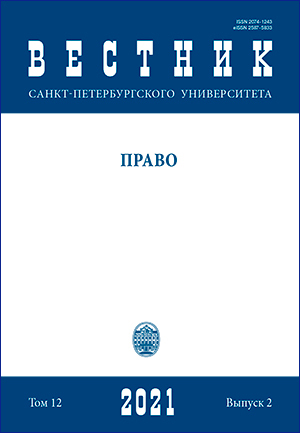The legal nature of pre-insolvency proceedings under Russian and European law
DOI:
https://doi.org/10.21638/spbu14.2021.212Аннотация
The article provides a critical analysis of bankruptcy prevention procedures in the context of interactions between the principle of self-regulation (interaction between free legal will of creditors and the debtor) and the principle “cross-class cram-down” (the right of a court to prevail over the principle of self-regulation). The judicial authority, within the framework of European preventive restructuring law, has the absolute right to discretionally decide on any issue if it is approved by the debtor (freedom of entrepreneurial activity is guaranteed to every solvent debtor). Interference in the business of the solvent and insolvent debtor by judicial authority is not allowed in any other procedures including traditional insolvency court procedures (the majority of creditors are empowered to make decisions). In all legal orders, the traditional insolvency court procedures prioritize the principle of “majority of creditors” to the principle of self-regulation in contrast to European preventive restructuring procedures, where the principle of self-regulation dominates. Therefore, European preventive restructuring cannot be unambiguously attributed to either a civil law legal nature or a bankruptcy law legal nature. In Russia pre-insolvency procedures represent only the civil law legal nature during all procedure. The author introduces new pre-bankruptcy terms: “normative legal collectivity” — mandatory distribution of consequences to all parties, “actual collectivity” — the voluntary consent of all creditors in a particular case and “regulatory actual collectivity” — the requirements for voluntary consent of all creditors. The final result of the European preventive restructuring procedure is unknown until the very end (the same for traditional insolvency court procedures), while according to Art. 31 of the Bankruptcy Law Act of the Russian Federation, the result is fully known from the beginning where it works according to the principle: “either everything and immediately, or nothing”.
Ключевые слова:
insolvency, legal nature, reorganization, pre-insolvency proceedings, bankruptcy prevention, preventive restructuring
Скачивания
Библиографические ссылки
Загрузки
Опубликован
Как цитировать
Выпуск
Раздел
Лицензия
Статьи журнала «Вестник Санкт-Петербургского университета. Право» находятся в открытом доступе и распространяются в соответствии с условиями Лицензионного Договора с Санкт-Петербургским государственным университетом, который бесплатно предоставляет авторам неограниченное распространение и самостоятельное архивирование.






